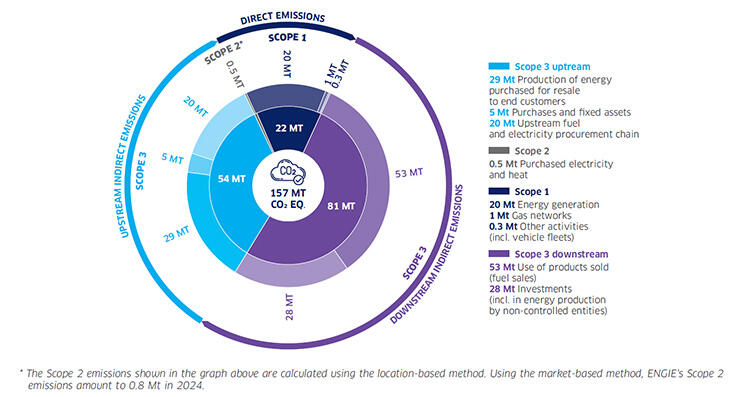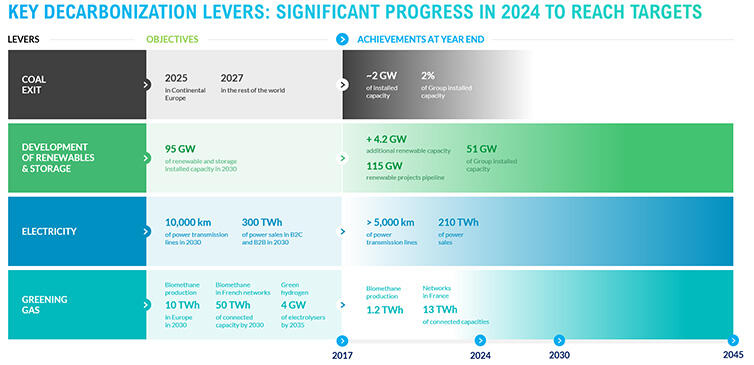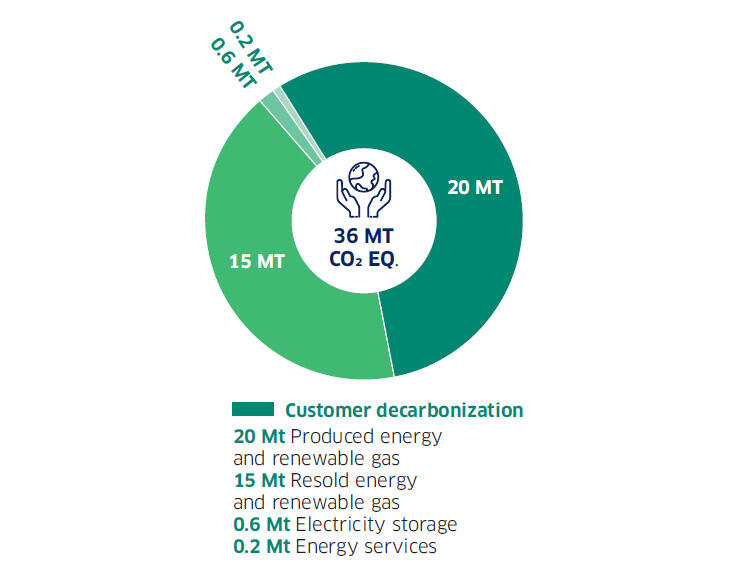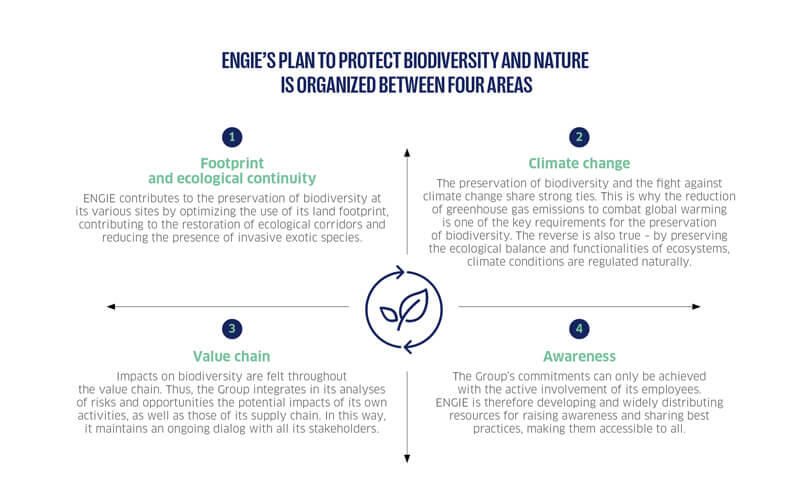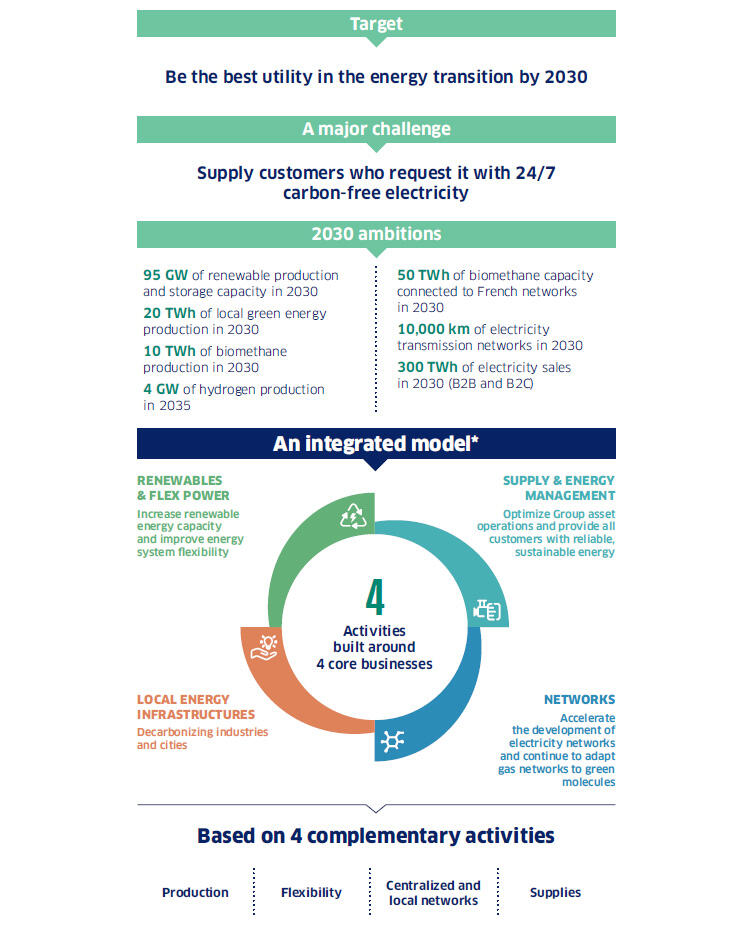
ENGIE, a world leader in energy transition
ENGIE is a global energy player, focused on renewable energies and decentralized low-carbon energy infrastructures, supporting the decarbonization of its customers. Thanks to our industrial approach and guided by our raison d'être, we are uniquely positioned to build tomorrow's low-carbon energy system and meet the challenges of climate change.
ENGIE’s business model is based on 4 core businesses to build tomorrow’s low-carbon energy system and achieve the Net Zero Carbon target by 2045 for the Group and its customers.

